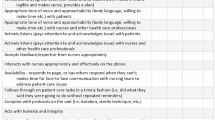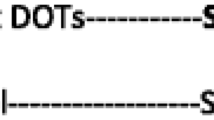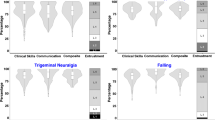Abstract
Objectives
The Ottawa Emergency Department Shift Observation Tool (O-EDShOT) is a workplace-based assessment designed to assess a trainee’s performance across an entire shift. It was developed in response to validity concerns with traditional end-of-shift workplace-based assessments, such as the daily encounter card. The O-EDShOT previously demonstrated strong psychometric characteristics; however, it remains unknown whether the O-EDShOT facilitates measurable improvements in the quality of documented assessments compared to daily encounter cards.
Methods
Three randomly selected daily encounter cards and three O-EDShOTs completed by 24 faculty were scored by two raters using the Completed Clinical Evaluation Report Rating (CCERR), a previously published 9-item quantitative measure of the quality of a completed workplace-based assessment. Automated-CCERR (A-CCERR) scores, which do not require raters, were also calculated. Paired sample t tests were conducted to compare the quality of assessments between O-EDShOTs and DECs as measured by the CCERR and A-CCERR.
Results
CCERR scores were significantly higher for O-EDShOTs (mean(SD) = 25.6(2.6)) compared to daily encounter cards (21.5(3.9); t(23) = 5.2, p < 0.001, d = 1.1). A-CCERR scores were also significantly higher for O-EDShOTs (mean(SD) = 18.5(1.6)) than for daily encounter cards (15.5(1.2); t(24) = 8.4, p < 0.001). CCERR items 1, 4 and 9 were rated significantly higher for O-EDShOTs compared to daily encounter cards.
Conclusions
The O-EDShOT yields higher quality documented assessments when compared to the traditional end-of-shift daily encounter card. Our results provide additional validity evidence for the O-EDShOT as an assessment tool for capturing trainee on-shift performance that can be used as a stimulus for actionable feedback and as a source for high-quality workplace-based assessment data to inform decisions about emergency medicine trainee progress and promotion.
Résumé
Objectifs
L’outil d’observation des quarts de travail des services d’urgence d’Ottawa (O-EDShOT) est une évaluation en milieu de travail conçue pour évaluer la performance d’un stagiaire pendant tout un quart de travail. Il a été développé en réponse à des problèmes de validité avec les évaluations traditionnelles en milieu de travail de fin de quart de travail, comme la fiche de rencontre quotidienne (DEC). Le O-EDShOT avait préalablement démontré de fortes caractéristiques psychométriques; cependant, on ignore toujours si l'O-EDShOT facilite des améliorations mesurables de la qualité des évaluations documentées par rapport aux fiches de rencontre quotidiennes.
Méthodes
Trois fiches de rencontre quotidiennes sélectionnées au hasard et trois O-EDShOT complétés par 24 membres du corps professoral ont été marqués par deux évaluateurs à l'aide de Completed Clinical Evaluation Report Rating (CCERR), une mesure quantitative en 9 points publiée précédemment de la qualité d’une évaluation en milieu de travail réalisée. Les scores du CCERR automatisé (A-CCERR), qui ne nécessitent pas d’évaluateur, ont également été calculés. Des tests t d'échantillons appariés ont été effectués pour comparer la qualité des évaluations entre les O-EDShOT et les DEC, telle que mesurée par le CCERR et l’A-CCERR.
Résultats
Les scores CCERR étaient significativement plus élevés pour les O-EDShOT (moyenne (ET) = 25,6 (2,6)) par rapport aux fiches de rencontre quotidiennes (21,5 (3,9) ; t (23) = 5,2, p < 0,001, d = 1,1). Les scores A-CCERR étaient également significativement plus élevés pour les O-EDShOT (moyenne (ET) = 18,5 (1,6)) que pour les fiches de rencontre quotidiennes (15,5 (1,2) ; t (24) = 8,4, p < 0,001). Les points 1, 4 et 9 du CCERR ont été notés beaucoup plus haut pour les O-EDShOT que pour les fiches de rencontre quotidiennes.
Conclusions
L’O-EDShOT produit des évaluations documentées de meilleure qualité par rapport à la traditionnelle fiche de rencontre quotidienne de fin de quart de travail. Nos résultats fournissent des preuves de validité supplémentaires pour l’O-EDShOT en tant qu’outil d’évaluation pour saisir les performances des stagiaires en poste qui peuvent être utilisés comme stimulus pour une rétroaction exploitable, et comme source de données d’évaluation de haute qualité en milieu de travail pour notifier les décisions sur la progression et promotion des stagiaires en médecine d’urgence.
Similar content being viewed by others
References
Norcini J, Burch V, Norcini J, Burch V. Workplace-based assessment as an educational tool: AMEE Guide No. 31. Med Teach. 2009;31:142–59.
Cheung WJ, Dudek N, Wood TJ, Frank JR. Daily encounter cards—evaluating the quality of documented assessments. J Grad Med Educ. 2016;8:601–4.
Holmboe ES, Sherbino J, Long DM, Swing SR, Jason R. The role of assessment in competency-based medical education. Med Teach. 2010;32:676–82.
Iobst WF, Sherbino J, Cate OT, Richardson DL, Dath D, Swing SR, et al. Competency-based medical education in postgraduate medical education Competency-based medical education in postgraduate medical education. Med Teach. 2010;32:651–6.
Cheung WJ, Wood T, Gofton W, Dewhirst S, Dudek N. The Ottawa Emergency Department Shift Observation Tool (O-EDShOT): a new tool for assessing resident competence in the emergency department. AEM Educ Train. 2020;4(4):359–68.
Sherbino J, Kulasegaram K, Worster A, Norman GR. The reliability of encounter cards to assess the CanMEDS roles. Adv Heal Sci Educ. 2013;18:987–96.
Sherbino J, Bandiera G, Frank JR. Assessing competence in emergency medicine trainees: an overview of effective methodologies. Can J Emeg Med. 2008;10(4):365–71.
Bandiera G, Lendrum D. Daily encounter cards facilitate competency-based feedback while leniency bias persists. Can J Emerg Med. 2008;10(1):44–50.
Kogan J, Holmboe E, Hauer K. Tools for direct observation and assessment a systematic review. J Am Med Assoc. 2009;302(12):1316–26.
Canadian Association of Emergency Physicians. Position statement on emergency medicine definitions from the Canadian Association of Emergency Physicians. 2015
American College of Emergency Physicians. Definition of emergency medicine. TX: Irving; 2015.
Crossley J, Johnson G, Booth J, Wade W. Good questions, good answers: construct alignment improves the performance of workplace-based assessment scales. Med Educ. 2011;45:560–9.
Dudek N, Gofton W, Rekman J. Faculty and resident perspectives on using entrustment anchors for workplace-based assessment. J Grad Med Educ. 2019;11:287–94.
Rekman J, Hamstra SJ, Dudek N, Wood T, Seabrook C, Gofton W. A new instrument for asessing resident competence in surgical clinic: The Ottawa Clinic Assessment Tool. J Surg Educ. 2016;73(4):575–82.
Dolan BM, Brien CL, Green MM. Including entrustment language in an assessment form may improve constructive feedback for student clinical skills. Med Sci Educ. 2017;27:461–4.
Rekman J, Gofton W, Dudek N, Gofton T, Hamstra SJ. Entrustability scales: outlining their usefulness for competency-based clinical assessment. Acad Med. 2016;91(2):186–90.
Dudek NL, Marks MB, Wood TJ, Lee AC. Assessing the quality of supervisors’ completed clinical evaluation reports. Med Educ. 2008;42:816–22.
Dudek NL, Marks MB, Wood TJ, Dojeiji S, Hatala R, Cooke L, et al. Quality evaluation reports: can a faculty development program make a difference? Med Teach. 2012;34(11):725–31.
Dudek NL, Marks MB, Bandiera G, White J, Wood TJ. Quality in-training evaluation reports—does feedback drive faculty performance? 2013;88(8):1129–34.
Cheung WJ, Dudek NL, Wood TJ, Frank JR. Supervisor–trainee continuity and the quality of work- based assessments. Med Educ. 2017;51:1260–8.
Bismil R, Dudek NL, Wood TJ. In-training evaluations: developing an automated screening tool to measure report quality. Med Educ. 2014;48:724–32.
Stat Trek. Random number generator [Internet]. 2018 [cited 2020 Jan 12]. https://stattrek.com/statistics/random-number-generator.aspx#error
McGraw KO, Wong SP. Forming inferences about some intraclass correlation coefficients. Psychol Methods. 1996;1(1):30–46.
Koo TK, Li MY. A guideline of selecting and reporting intraclass correlation coefficients for reliability research. J Chiropr Med. 2016;15(2):155–63.
Tavakol M, Dennick R. Making sense of Cronbach’s alpha. Int J Med Educ. 2011;2:53–5.
Cohen J. The effect size index: d. Statistical power analysis for the behavioral sciences. 2nd ed. Hillsdale: Erlbaum; 1988.
Halman S, Rekman J, Wood T, Baird A, Gofton W, Dudek N. Avoid reinventing the wheel: implementation of the Ottawa Clinic Assessment Tool (OCAT) in Internal Medicine. BMC Med Educ. 2018;18(1):1–8.
Cook DA, Brydges R, Ginsburg S, Hatala R. A contemporary approach to validity arguments: a practical guide to Kane’s framework. Med Educ. 2015;49(6):560–75.
Streiner DL, Norman GR, Cairney J. Health measurement scales: a practical guide to their development and use. 5th ed. New York: Oxford University Press; 2008.
Govaerts MJ, Schuwirth LW, Muijtjens AM. Workplace-based assessment: effects of rater expertise. Adv Heal Sci Educ. 2011;16:151–65.
Cohen GS, Blumberg P, Ryan NC, Sullivan PL. Do final grades reflect written qualitative evaluations of student performance? Teach Learn Med. 1993;5(1):10–5.
Speer AJ, Solomon DJ, Ainsworth MA. An innovative evaluation method in an internal medicine clerkship. Acad Med. 1996;71(1):76–8.
Watling CJ, Ginsburg S. Assessment, feedback and the alchemy of learning. Med Educ. 2019;53:76–85.
Lefroy J, Watling C, Teunissen PW, Brand P. Guidelines: the do’s, don’ts and don’t knows of feedback for clinical education. Perspect Med Educ. 2015;4:284–99.
Journal AI, Halman S, Dudek N, Wood T, Pugh D, Mcaleer S, et al. Direct observation of clinical skills feedback scale: development and validity evidence. Teach Learn Med. 2016;28(4):385–94. https://doi.org/10.1080/10401334.2016.1186552.
Marcotte L, Egan R, Soleas E, Dalgarno N, Norris M, Smith C. Assessing the quality of feedback to general internal medicine residents in a competency-based environment. Can Med Educ J. 2019;10(4):32–47.
Van Der Vleuten C, Schuwirth L, Driessen E, Dijkstra J, Tigelaar D, Baartman L, et al. A model for programmatic assessment fit for purpose. Med Teach. 2012;34:205–14.
Sherbino J, Bandiera G, Doyle K, Frank JR, Holroyd BR, Jones G, et al. The competency-based medical education evolution of Canadian emergency medicine specialist training. Can J Emerg Med. 2019;22(1):95–102.
Hawkins RE, Welcher CM, Holmboe ES, Kirk LM, Norcini JJ, Simons KB, et al. Implementation of competency-based medical education: are we addressing the concerns and challenges? Med Educ. 2015;49(11):1086–102.
Caverzagie KJ, Nousiainen MT, Ferguson PC, ten Cate O, Ross S, Harris KA, et al. Overarching challenges to the implementation of competency-based medical education. Med Teach. 2017;39(6):588–93.
Entrustable Professional Activity Guide: Emergency Medicine. Emerg Med Spec Committee EPA Guid Emerg Med Ottawa R Coll Physicians Surg Canada [Internet]. 2017. https://cloudfront.ualberta.ca/-/media/medicine/departments/emergency-medicine/documents/epa-guide-emergency-med-e.pdf
Pinsk M, Karpinski J, Carlisle E. Introduction of competence by design to Canadian nephrology postgraduate training. Can J Kidney Heal Dis. 2018;5:1–9.
Shalhoub J, Marshall DC, Ippolito K. Perspectives on procedure-based assessments: A thematic analysis of semistructured interviews with 10 UK surgical trainees. BMJ Open. 2017;7(3):1–8.
Oswald A, Cheung W, Bhanji F, Ladhani M, Hamilton J. Mock Competence Committee Cases. [Internet]. 2020 [cited 2020 May 28]. https://www.royalcollege.ca/mssites/casescenarios_en/story_html5.html
LaDonna KA, Hatala R, Lingard L, Voyer S, Watling C. Staging a performance: Learners’ perceptions about direct observation during residency. Med Educ. 2017;51(5):498–510.
Bindal T, Wall D, Goodyear HM. Trainee doctors’ views on workplace-based assessments: are they just a tick box exercise? Med Teach. 2011;33(11):919–27.
Martin L, Sibbald M, Brandt Vegas D, Russell D, Govaerts M. The impact of entrustment assessments on feedback and learning: trainee perspectives. Med Educ. 2020;54(4):328–36.
Macewan MJ, Dudek NL, Wood TJ, Gofton WT. Continued validation of the O-SCORE (Ottawa Surgical Competency Operating Room Evaluation): use in the simulated environment. Teach Learn Med. 2016;28(1):72–9.
Voduc N, Dudek N, Parker CM, Sharma KB, Wood TJ. Development and validation of a bronchoscopy competence assessment tool in a clinical setting. An Am Thorac Soc. 2016;13(4):495–501.
Acknowledgements
The authors would like to thank Drs. Sebastian Dewhirst and Jeffrey Landreville at the University of Ottawa Department of Emergency Medicine for their contribution as raters in this study, in addition to Katherine Scowcroft, a research assistant at the University of Ottawa Department of Innovation and Medical Education for her support.
Funding
This research was supported through grants to the authors from the University of Ottawa Department of Emergency Medicine (DEM) Spring Academic Grant as well as the Medical Student Education Research Grant (MSERG) through the Ontario Medical Students Association (OMSA).
Author information
Authors and Affiliations
Corresponding author
Ethics declarations
Conflict of interest
The authors declare that they have no conflict of interest.
Supplementary Information
Below is the link to the electronic supplementary material.
Rights and permissions
About this article
Cite this article
Endres, K., Dudek, N., McConnell, M. et al. Comparing the Ottawa Emergency Department Shift Observation Tool (O-EDShOT) to the traditional daily encounter card: measuring the quality of documented assessments. Can J Emerg Med 23, 383–389 (2021). https://doi.org/10.1007/s43678-020-00070-y
Received:
Accepted:
Published:
Issue Date:
DOI: https://doi.org/10.1007/s43678-020-00070-y




